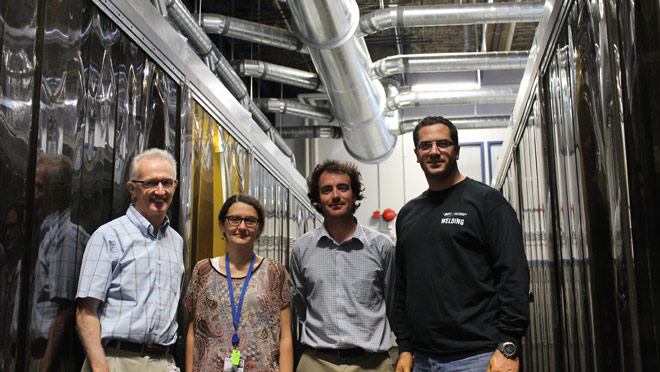BCIT ventilation retrofit offers multiple benefits – plus $125,000 savings each year

There’s fresh air, but less wasted heat. Fume control from any angle when needed, but otherwise a quiet atmosphere for talk and instruction. And on top of it all, the new ventilation system at BCIT’s welding shop is saving a heap of money each year.
“We were proud of finding a way to use a triple bottom line framework to actually prove that there are benefits other than just savings,” says Alexandre Hebert, energy manager for the BC Institute of Technology. Hebert led the testing that identified the welding shop as the worst energy performer within an area of the campus known as “Factor Four.” Buildings in Factor Four are aiming at a four-fold reduction (75%) in energy and materials consumption. (View map and live energy data.)
Small building, big energy bills
The welding building has about 100 booths where students practice various types of welding skills. “For ventilation, you don’t need to measure the amount of time a student is preparing the material or thinking about how they will do the weld,” explains Hebert. “What matters is the percentage of time when there is a spark, when the student is actually creating fumes.”
According to that standard, Hebert found the booths were in use only about five percent of the time, yet the ventilation system ran full-time, about 16 hours a day, six days a week. Not surprisingly, costs were high: to heat a 25,000 sf building from October to March, the natural gas bill was $75,000 a year.
“We had to reheat everything,” says Hebert. “We couldn’t recirculate any air, so we had to heat the equivalent of every cubic meter of air that we were exhausting.”
The building has been retrofitted with an on-demand system with occupancy sensors that recognize when welding equipment is in use. And rather than locate the air intake at a fixed location at the back of each booth, intakes are placed on telescopic arms that students position right above where they are working, allowing the air flow to be reduced. Hebert calls it “local air extraction,” a similar concept to using task lighting instead of lighting an entire room.
The project is estimated to save 600,000 kilowatt hours of electricity, 5,000 gigajoules of natural gas, and 200 tonnes of CO2 equivalent per year. The incremental cost of adding energy efficiency measures to the total ventilation retrofit was $500,000 (the entire project cost $2.7 million). With a Power Smart incentive and maintenance savings factored in, the project yields estimated savings of $125,000 per year and a payback of about 2.5 years. Read more…
This article has been re-posted with the permission of BC Hydro.



